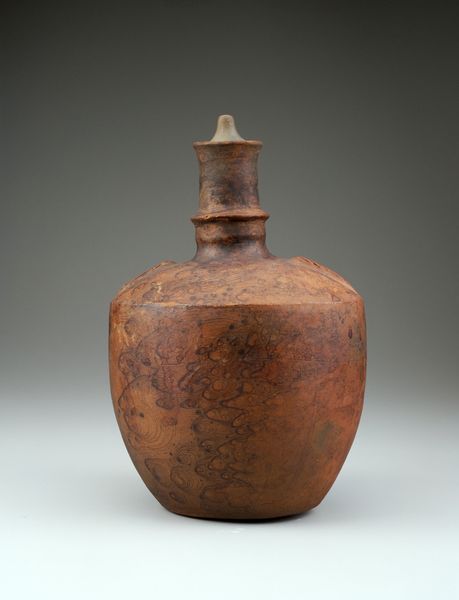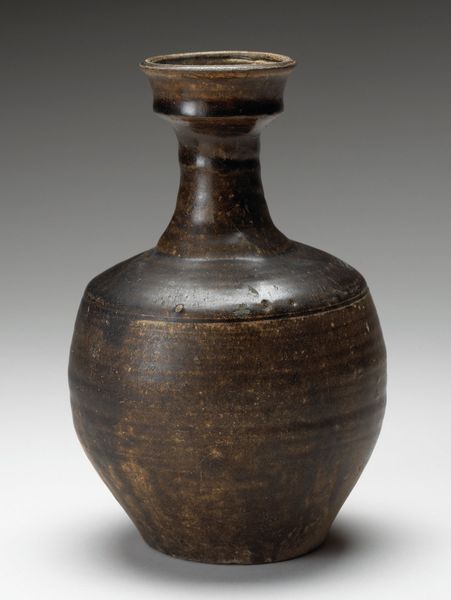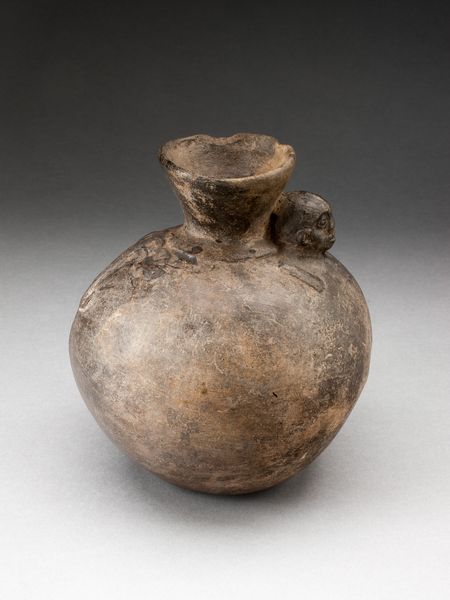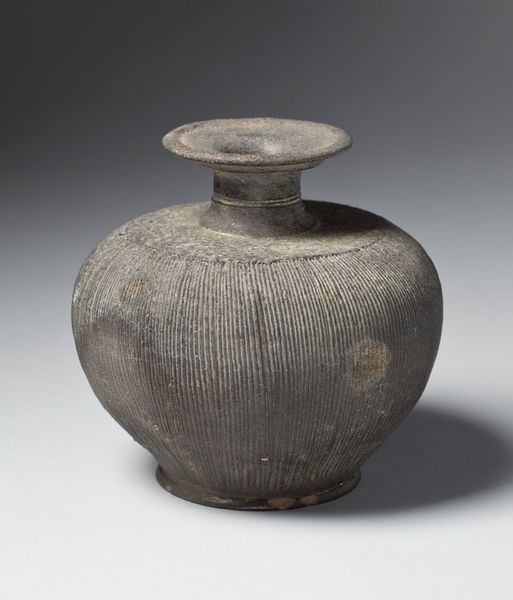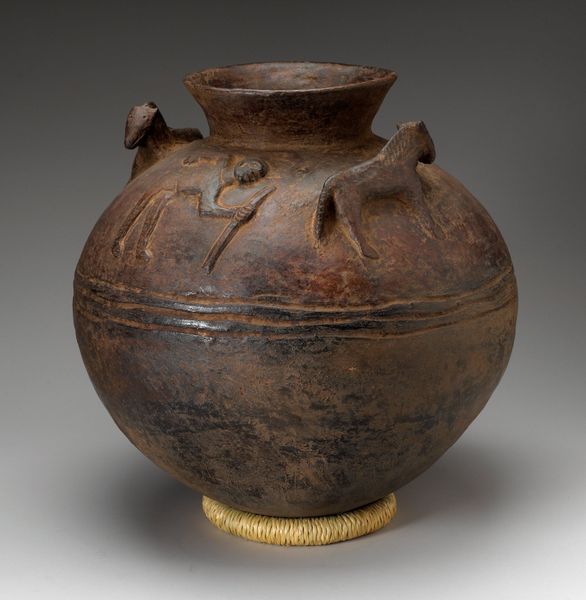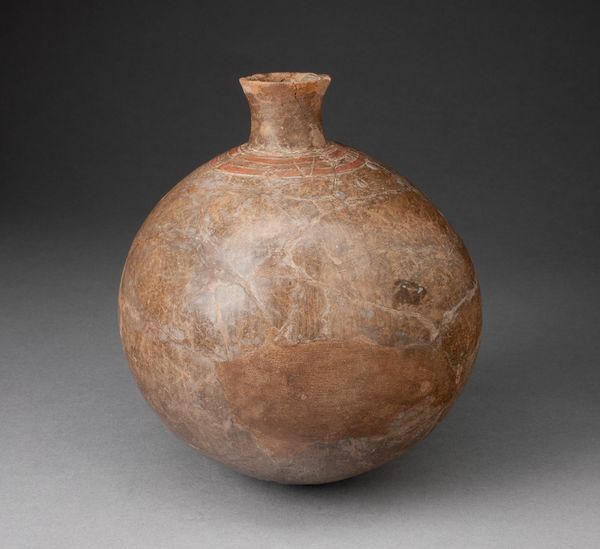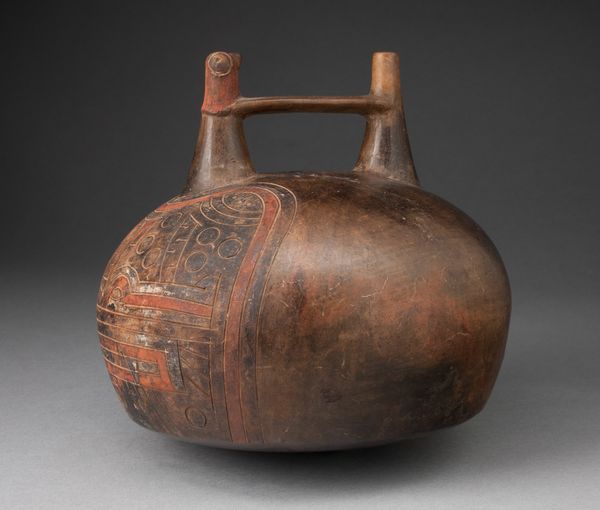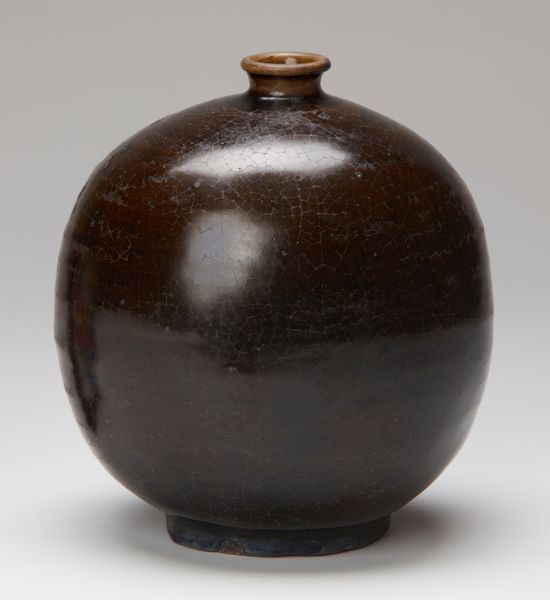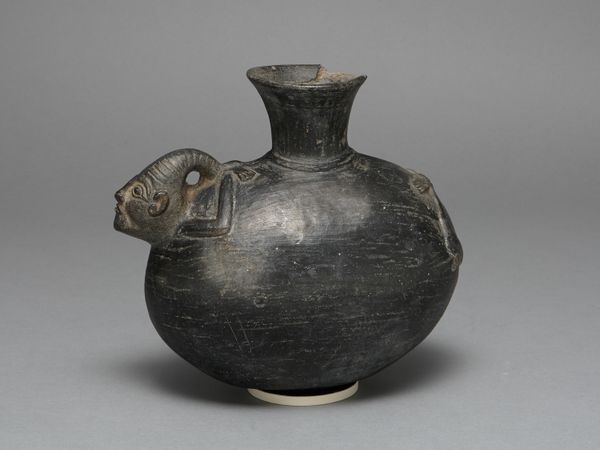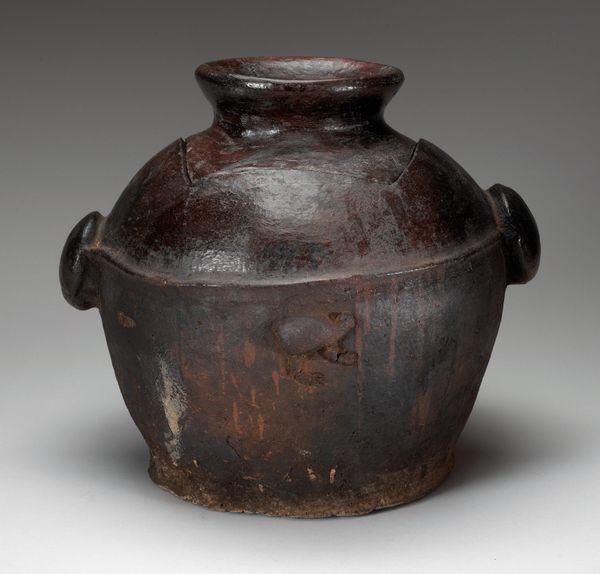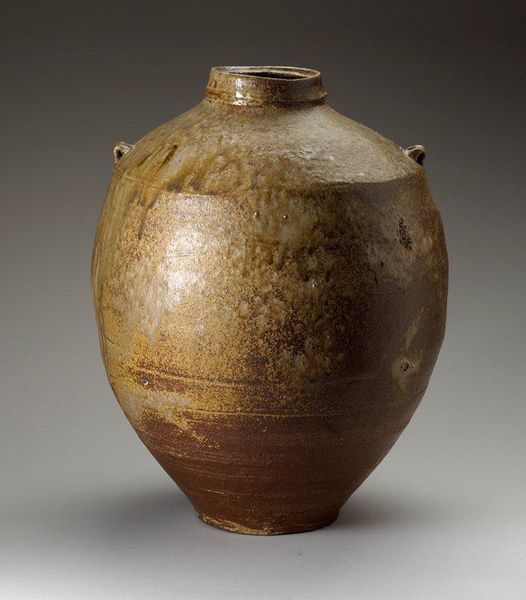
ceramic
#
3d sculpting
#
egg art
#
3d printed part
#
ceramic
#
jewelry design
#
sculptural image
#
culinary art
#
stoneware
#
wash background
#
ceramic
#
watercolour illustration
Dimensions: 8 3/4 x 7 1/2 x 5 1/8 in. (22.23 x 19.05 x 13.02 cm)
Copyright: Public Domain
Editor: Here we have an anonymous 15th-century ceramic flask from the Minneapolis Institute of Art. The glazing and earthy tones give it such a tactile feel. What stands out to you about this piece? Curator: It’s the clear evidence of process for me. Consider the raw materials: clay, glaze – all transformed through human labor and high temperatures. This wasn't some precious object to be placed on a mantle; it had a practical function. Do you see the drips and variations in the glaze? Editor: Yes, it’s uneven, almost like it was quickly dipped rather than carefully painted. Curator: Exactly! It speaks to the everyday nature of its production. These imperfections aren’t flaws but rather imprints of the maker’s hand and the specific conditions of the firing process. How do you think its use affected its meaning? Editor: Well, it’s called a flask, so I imagine it held liquids… perhaps something consumed communally? That would affect its value to the owner, maybe making it more sentimental? Curator: Precisely! Think about who used this flask. Was it traded? What was the social status of its owner? Understanding its potential role in daily life shifts our focus from aesthetics to the socio-economic context. The slight imperfection even invites the user to interact with the piece as the intended interaction creates slight scratches as if caressing the piece. Editor: So, by analyzing the materials and the way it was made, we can uncover stories about its past and the people who interacted with it. It brings up so many questions! Curator: Exactly! That's the beauty of looking at art through a materialist lens. We shift the focus from the purely aesthetic to a tangible object with connections to labor, social class, and the economics of its time. Editor: That's a whole new way of seeing art for me! I will certainly remember this next time I see ceramic work!
Comments
minneapolisinstituteofart almost 2 years ago
⋮
Bottles and flasks with a thick iron-brown or black glaze became popular during the Joseon period. Because shards of such vessels have been found at Buncheong kilns, it is likely that the same kilns produced both wares.
Join the conversation
Join millions of artists and users on Artera today and experience the ultimate creative platform.
